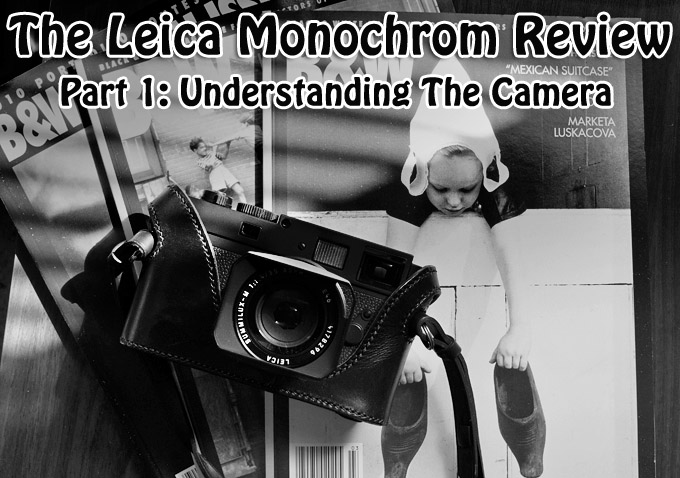
The Leica M Monochrom Review Part 1. Understanding the Camera and VS film.
After reading this, Part 2 is now up HERE.
Part 2.5 is up HERE – Part 3 is up HERE
The Monochrom and Zeiss Sonnar 1.5 – Some slight PP to enhance the contrast
After posting about the arrival of my Leica Monochrom I have had quite a few e-mails asking me to do a “rolling review”. Well I thought about it and even though I have only had the camera at this point for two full days I decided “why not”? The 1st installment will be about the Monochrom, my thoughts as well as some 100% crop comparisons with Tri-X and HP-5. Nothing technical, just real world and the thoughts from a guy who has shot ALL Leica cameras extensively. Over the coarse of this 4 part review I will cover just about EVERYTHING that can be covered from comparisons, to filters on your lenses to filters in Lightroom or Photoshop. I will go over real world high ISO shooting as well as show off some cool accessories that will complete your monochrom if you choose to buy one for yourself. So here we go….
Again, this review will be done in at least FOUR parts. Part one is presented here “Understanding the Camera”. Part 2 will follow next week and so on. With a camera as special as this I figured I would make it as thorough as I can without getting all boring and technical. There will be MANY samples with this camera and various lenses and as each new part is posted I will post links to each page so you can easily find all of the parts. I hope you enjoy this as much as I have enjoyed writing it.
As for the Leica haters who will be posting nasty comments let me remind you to that you must keep comments relevant and keep the nasty attacks to yourself. They are not warranted or welcome here. Of course I know you can shoot B&W with ANY digital camera made so this is why I am going to be testing this camera for a long term review. To see exactly what it can and can not do.
The Unboxing of my new Monochrom
–
So far so good…and yes, it can replace B&W film for most of us. Didn’t take much time for me to figure that one out.
I have only had this (production) camera for TWO days and let me state right up front that it is indeed my own personal camera. Not a loaner or rental but MINE. Why did I decided to ditch my M9-P and pick up the Monochrom knowing damn well you can shoot the M9-P and convert to B&W using Silver Efex or Alien Skin? Well, after shooting this camera in Berlin for an hour at the launch event…yes, just an hour..I was already hooked. I knew that the files coming out were a tad flat and grey but I also knew this camera had serious potential. Much more so than the Leica M9 being converted to B&W.
[ad#Adsense Blog Sq Embed Image]
100% crop – To see the intense detail click the image below which is a 100% crop shot at f/1.5 with a 50 sonar Zeiss lens. This is what comes out of the Monochrom at ISO 4000 and is a crop of the image at the top of this page. Some my say it is too smooth but think of the possibilities here..any ISO for any situation. If you want grain, set it to 8000 and shoot away, or add it in post.
–
No a 100% crop from a film scan – Leica M7 – 50 Cron – Tri-X – Coolscan V – Makes the shot from the MM look like Medium Format and keep in mind that he crop above was shit as ISO 4000..below is an ISO 400 film and it has more grain than the Monochrom. You need to crank the MM to ISO-8000 to get this kind of grain.
–
Leica M7 and 50 cron with Ilford HP5 – Nikon Coolscan V
–
Now I know my statement here of “yes, it can replace film” is going to piss many hardcore film shooters off and have some hate slung at me but I say what I feel and what I feel is that this is a definitive B&W camera for those who are passionate about the “art” of photography, the “emotion” of photography and the “beauty” of black & white photography. Black & White Film has always been the heart and soul of photography, especially for those who have shot with Leica cameras but these days shooting film for many is a pain in the ass. The cost, the processing, the chemicals, the darkroom, etc. Let us not forget that If you scan your film you are digitizing it anyway and when printing on a printer at home you lose the true qualities of that film. I have scanned thousands of B&W frames in my day and I am saying with 1000% conviction that the files I am seeing from the Monochrom are the closest I have ever seen any digital come to film but not 35mm film because they look more like rich medium format files.
But how can it replace film when you will not have the full experience of the darkroom? Some crave that experience..I know this. Well in that area it CAN NOT replace film. When I say it can kick some film to the curb I am speaking from my experience with film (shooting an M7 only for a year and processing film, scanning film, working with film, etc). The fact of the matter is that the Leica Monochrom is the only digital camera I have used to date that I feel can finally meet and yes even exceed the qualities of 35mm B&W film. Like I said the Monochrom needs to be compared to medium format more than anything..or even a Sigma DP2m 🙂
How can you say this Steve?? You must be stricken with some sort of Leica MM fanboy disease!!!
Lol, well after shooting with the Monochrom I have found that the files coming out of the camera can be flat and very very grey (just like a film scan actually). But work on them just a little and you are rewarded with absolutely insane detail and resolution that kicks not only 35mm film to the curb but also kicks the the M9 along with it. Again, I am speaking about B&W film and the detail and resolution and even DR.
CLICK the image for full 100% crop. All I did here was adjust the contrast – 35 Lux FLE
–
Looks like a nice quality film to me but with even more detail. Click it for larger view which will look much better 🙂
The Monochrom means busine$$.
For starters this camera has some serious Medium Format quality resolution and you would think it was a 36MP sensor instead of an 18MP sensor. Yes, it is that good and literally does things that even an M9 can not do. Then again, the M9 does color as well and it is cheaper so the Leica Monochrom is ONLY for those who seriously want to get into black & white photography. Doing this means changing your whole brain and how it functions for going out and shooting. Shooting in B&W means “seeing” in B&W and that is much different than seeing in color.
I added some grain to this one to give it a teeny bit of grit.
When shooting color it is easy to see a shot and think “this will look amazing”. When shooting B&W you have to know what will look good, what lighting will work good and what kind of tones are in the shot. If you thought shooting an M9 made you think then this Monochrom makes you think even more. But this is a good thing.
Just after two days with this beautiful machine I am adoring it. Loving it and even though the price of admission is sky high it is 100% unique. There is NOTHING like it. NOTHING. This is part of the reason why Leica had the balls to price it where they did. They know there are some who would give even more than $8000 for a camera such as this. They are not shooting for volume here as this is a STATEMENT piece from Leica. It brought them loads of press (free advertising) and they are delivering it in teeny tiny quantities and selling all that they can make.
Sure the new M is coming at $6995, $1000 less than the Mono and it will shoot color, have higher MegaPixels and even do video. A jack of all trades. But in my opinion if you are a black & white person even the new M will not match the Monochrom. It can come close but can’t match it.
A great case for the Monochrom is the hand made and hand stitched M case from classiccases.co.uk. I keep the back flap up so I avoid the urge to chimp 🙂 (preview files on the LCD) I am not usually a case guy but this one feels great and is not so bulky like some of the popular M cases. The fit is also superb.
UPDATE: My case broke after a couple of weeks as a snap fell off for no reason. Never had that happen with any case in my life so just a heads up.
To Understand the Monochrom…
The Monochrom is a camera much like the Leica MP. A lifetime camera. Of course many will say a digital camera can not be a lifetime camera but I beg to differ. If you are 12 then maybe not, but if you are like me, in your 40’s or older then this is a camera that could easily last our lifetime as long as Leica stays in business and supplies service and batteries. Even their Digilux 2 is still in service and they still repair them and it is well over 12 years old. The Monochrom is not one of those cameras you buy and sell a year later for something new..unless you bought it for the wrong reasons like style and flash or curiosity. For those who live, breath, eat and sleep B&W this is YOUR camera. Period. No film stock to buy. No chemicals to inhale. No time consuming scanning film for hours. No ISO restrictions. This is about as good as it will ever get for B&W only cameras. It simply can not get any better than this when we are talking 35mm format and compact.
–
If you are thinking of this camera then you have to ask yourself these questions BEFORE pulling the trigger:
- Do I live and breathe to shoot in Black & White and do I want just about the best B&W results I can get digitally without the cost of film?
- Am I ok shooting ONLY B&W, even if it means missing shots that scream for color?
- Can I afford a Monochrom and an M9? Or a Monochrom and something else that shoots color?
- Am I 100% sure I do NOT want to shoot B&W film (you can do this much cheaper with an M6 and Tri-X but with restriction and not the same qualities)
- Do I enjoy shooting with a Rangefinder/Leica M?
- Do I already own Leica M mount glass?
- Am I ok with a low res crappy LCD on the back of my camera?
- Do I want to shoot my M at ISO 3200 or 6400 or even ISO 10,000 and get great results?
Check out the Dynamic Range and subtle tones..the way the Monochrom handled the highlights here is beautiful. Not blown out or underexposed – just right.
About the Leica Monochrom Sensor. Why is it so special?
The Leica Monochrom looks like, smells like, feel like, and shoots JUST like a Leica M9 or M9-P or even new M-E. It is the same M9 body that we all know and love (and some hate) with the same LCD, same rangefinder system and same limitations that all rangefinders have (at least until the new M arrives). The only difference with the Monochrom is that it has a very special sensor that records your photos in MONO. I can sit here for an hour and write up how and why this is but I will keep it simple as other sites have went into the technical qualities of the sensor. In basic terms this sensor, because of the lack of color filter array the Monochrom sensor can capture more light but not capture the color. There is also no need for demosaicing (combining color info) so this sensor is capable of capturing insane amounts of detail. It is in fact a hot rodded M9 18MP sensor but you will get more detail than the M9. Like I said, out of the camera the files are smooth as silk up to ISO 2500 and after that you get some nice grain (I will go over this in future installments) so you choose how you want your files to look.
Just know that the files from this camera and sensor are very “tweakable” to get whatever look you want from it. I am excited to see what others can do with this as I expect we will see some flat out astounding shots from the Monochrom in the near future as everyone gets their own personal processing prefs down. As for me, I much prefer this camera to shooting B&W film. I even shoot it with the LCD covered using my classiccases.co.uk case and it is similar to shooting film (without the advance lever of course). I like having no restrictions and that is what this camera is about. NO RESTRICTIONS.
Want to shoot in bright light? No problem though an ND filter will help as the ISO low spot is 320, high for full sun and fast lenses. Still better than being stuck with 400 or 1600 film in your camera in sunlight. Want to shoot in dark? Slap on a 1.4 lens and crank the ISO. Results will be there with some gorgeous film like grain.
Same shot – 1st one right from camera with a little sharpening…
–
Next shot is with an Alien Skin Tri-X 400 filter added – contrast boosted, whites are whiter and looks a little more rough
I have read a few comments from Leica haters who are saying that it is ridiculous that you need to process files from this camera because it cost $8000. Well, every digital camera in existence, even film cameras, will give you files you can use right from camera. If you want to take that extra step and give more life to your photo you may want to process. I know people who spend HOURS in the darkroom dodging and burning their prints from film. With digital it is no difference and to suggest we shouldnt need to do work to photos is sort of ridiculous. Even $30k medium format cameras could use their files tweaked. It’s actually what makes part of being a photographer fun. Working on your files. Unless you are one of those who go out to shoot 1000 frames a day, then I could understand it. But if that is the case then you should just forget about processing photos. Hire someone to do it 🙂
To understand the Monochrom you have to know what it is all about. I have explained it in this post which is part 1 of 5 in my ongoing Monochrom review. This camera is not for everyone and yes you can get great B&W conversions from many cameras. Leica M8, M9, Nikon D800 and others but the Monochrom is not only about shooting in B&W, it is about shooting in a style that some of us love so much. It is a true rangefinder which is not an experience you can get from a Nikon D800. It is compact and you can not get this from a D800. It has a jewel like build (also not with the D800). The lenses are the best in the world and SMALL. Shooting a rangefinder puts you in a different mindset. I have spoken about this many times but it is true and to those who are the Leica haters, that is OK. Everyone is entitled to their opinion just as I am to mine. Not everyone likes shooting with an RF.
As for the pricing I feel Leica overdid it. I wish this camera came in at $5500 but I also understand what Leica is doing with this camera. Like I said it is a niche specialist statement piece to show everyone that it can be done in 35mm and by Leica, the one company who SHOULD be doing it.
*Just know that the Monochrom is just like an M9 though it does have the Sapphire glass cover over the low res antique LCD.
I feel Leica will be on another roll here soon with the new M-E already in stock and the new M coming soon with it’s all new features there are interesting times ahead indeed.
Part TWO of this review is coming in about 7-12 days. I will go over high ISO and have a load of sample images. I am hoping that for parts 3-5 I can do some comparisons with other cameras such as the OM-D, D800 and Leica M9 and M. Stay tuned 🙂 As soon as part two is completed it will be linked from THIS at the top and bottom.
I want to give a shout out and THANK YOU to Leica dealer Ken Hansen (khpny19@aol.com) with whom I was #1 on his list for this camera. I am happy to finally have it in hand 🙂 I think Ken has the new M-E in stock right now as well. He also has some great lenses in stock so give him an e-mail if you are looking for something special. PopFlash.com is also getting stock of lenses and M-E’s as they sold out of their 1st batch in one day. These are my sponsors so treat them well!
Until next time!
Steve
ALL I ASK! HELP ME TO KEEP THIS SITE GOING AND GROWING!! IT’S EASY TO HELP OUT & I CAN USE ALL THE HELP I CAN GET!
Remember, anytime you follow my links here and buy from B&H or AMAZON, this helps to keep my site going. If it was not for these links, there would be no way to fund this site, so I thank you in advance if you visit these links. I thank you more if you make a purchase! I have nifty search bars at the upper right of each page so you easily search for something at either store! I currently spend 10-14 hours a day working on this site and the only way that I can pay for it is with your help, so thank you! Currently my traffic has been increasing but my funds to pay for the site has been decreasing, so any help would be GREATLY appreciated!
Even if you buy baby food, napkins or toothpicks at amazon it helps this site, and you do not pay anything extra by using the links here. Again, you pay nothing extra by using my links, it is just a way to help support this site, so again, I thank you in advance ![]()
If you enjoyed this article/review, feel free to leave a comment at the bottom of this page and also be sure to join me on twitter or my new facebook fan page and Google + page! Also, you can subscribe to my feed at my subscribe page HERE and read these posts in your browser or news reader! As you may see I do not ask for “donations” through paypal, just support by reading, subscribing, liking, commenting, coming back and visiting my sponsors. Thank you!

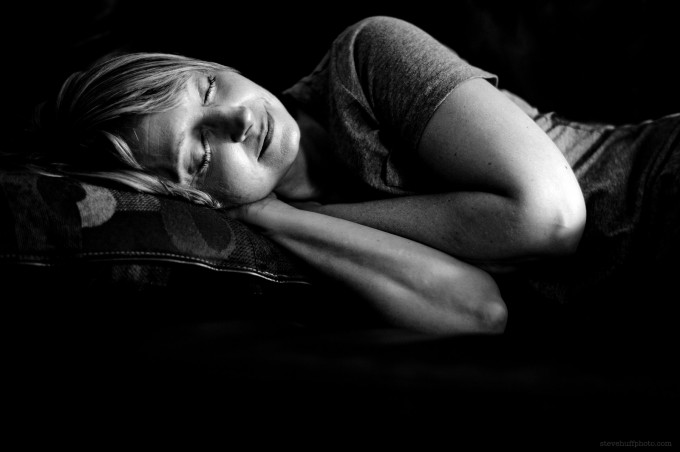
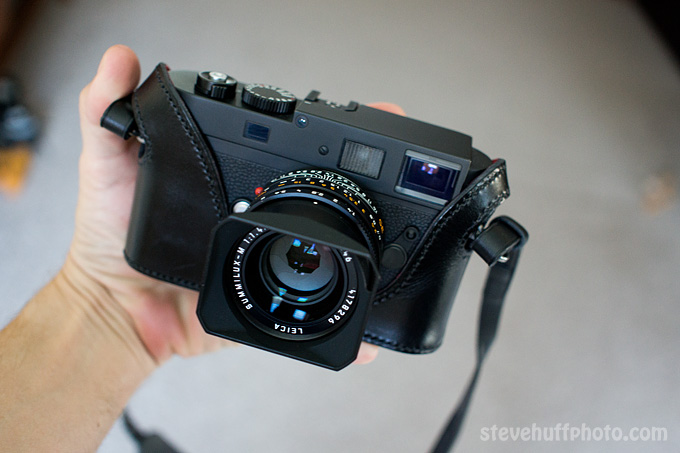
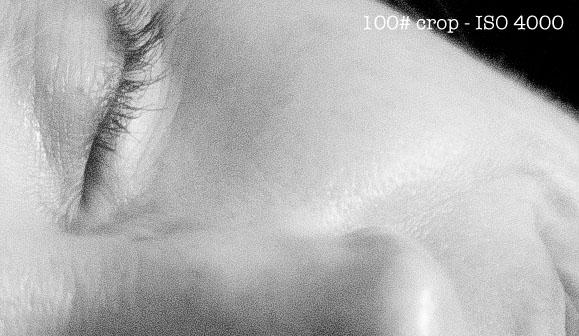
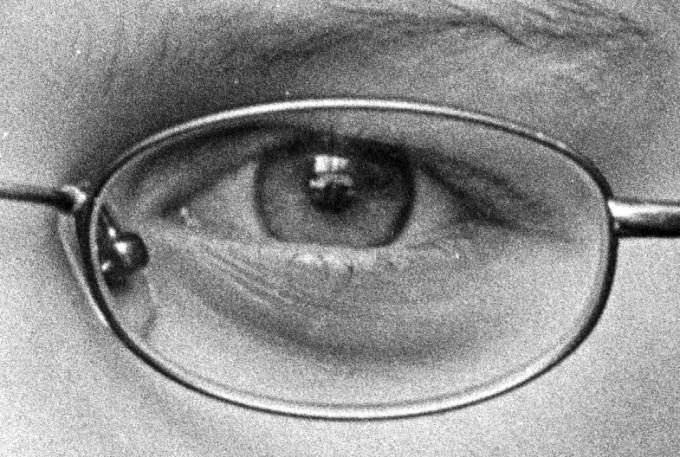
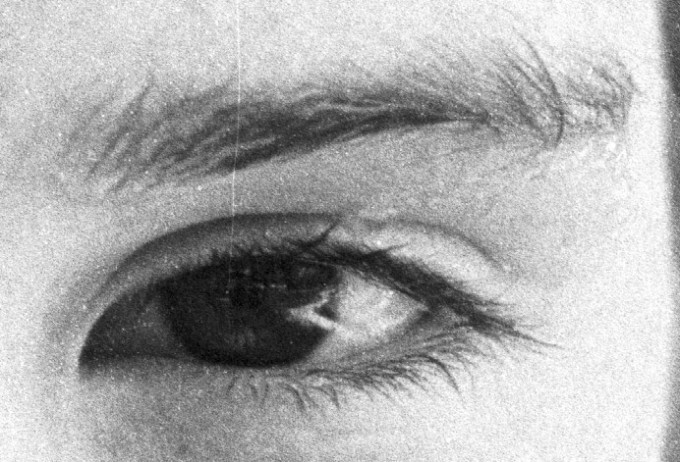
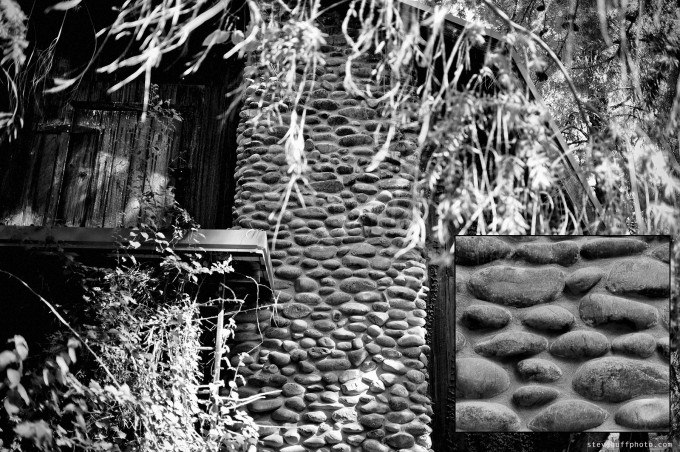
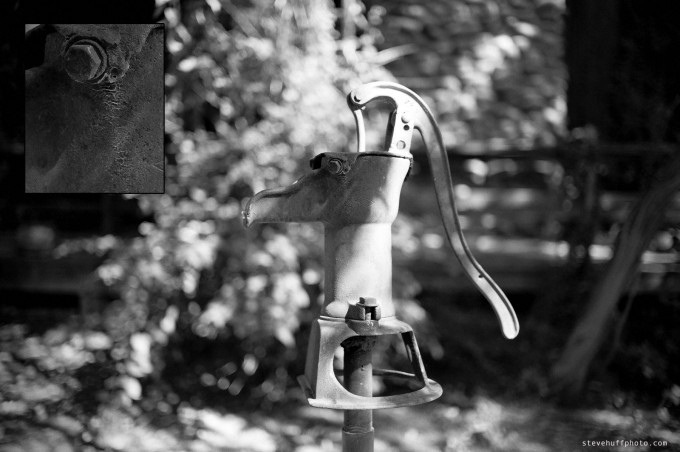
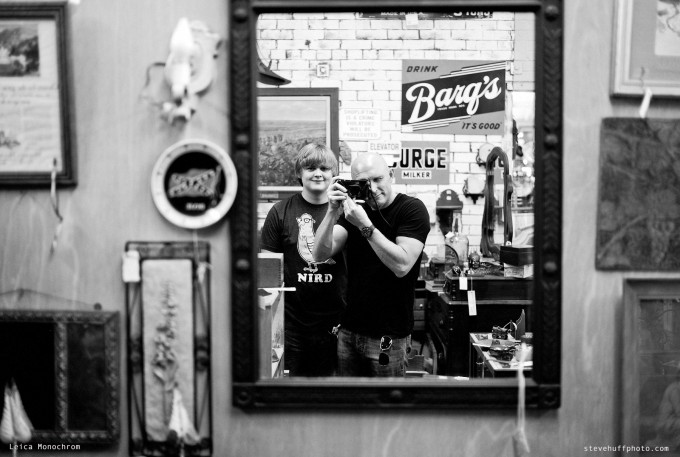
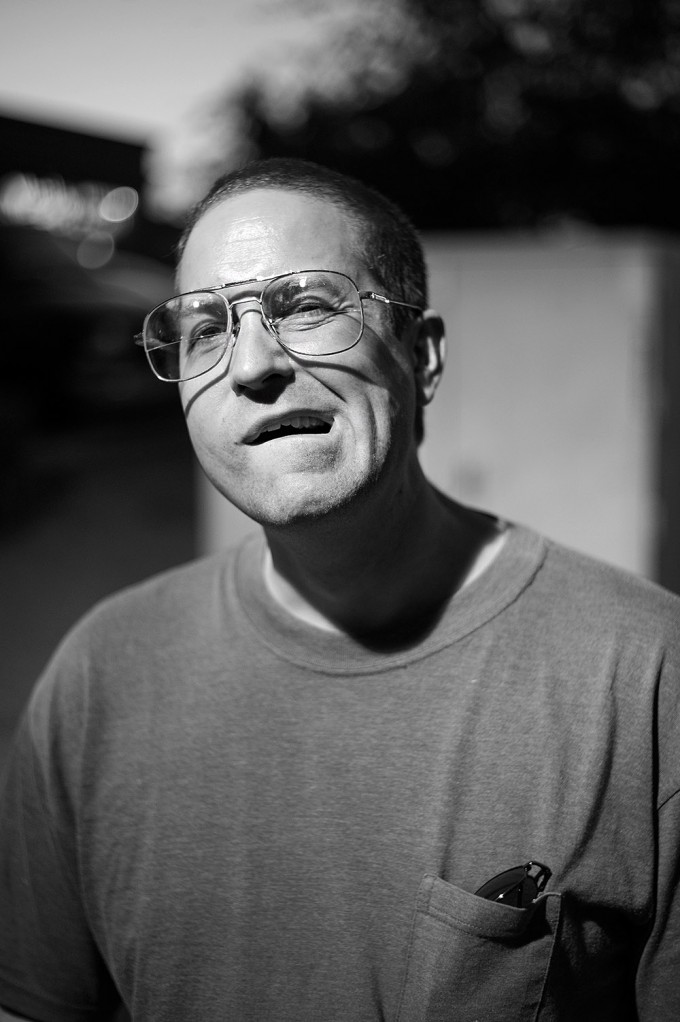

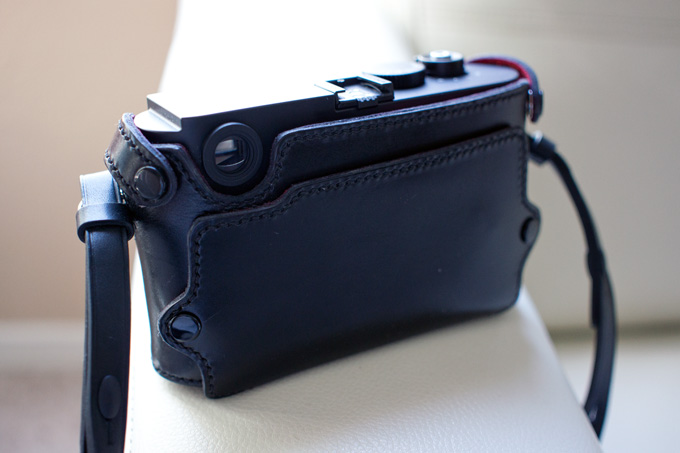
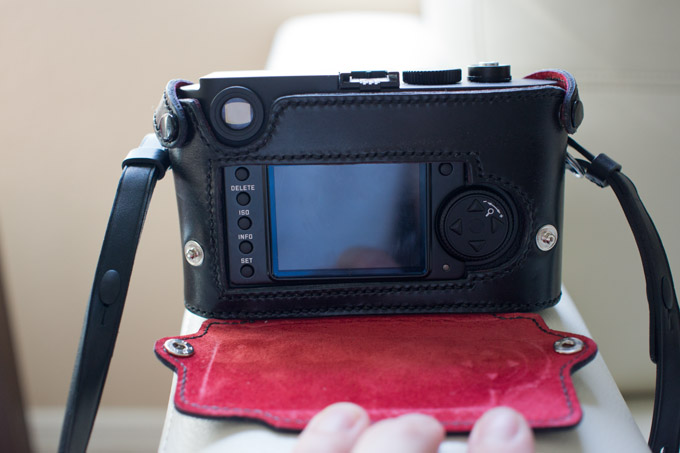

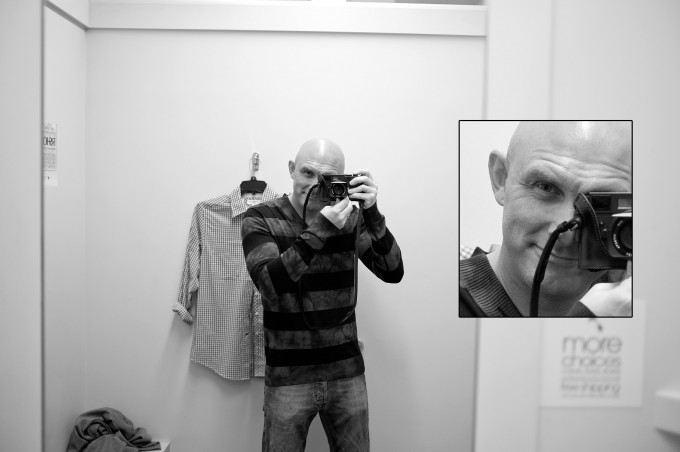
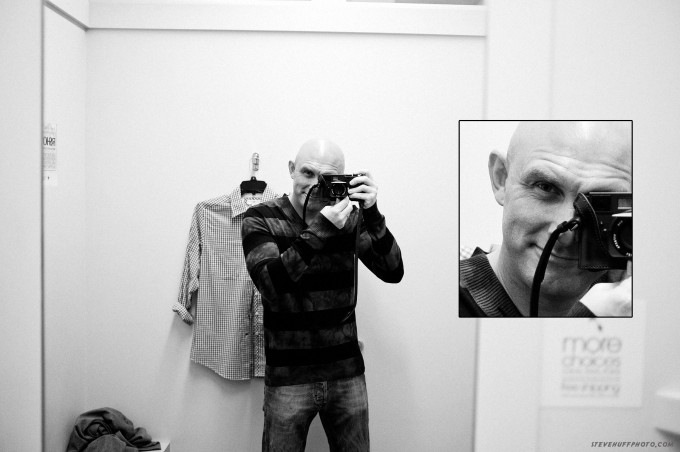
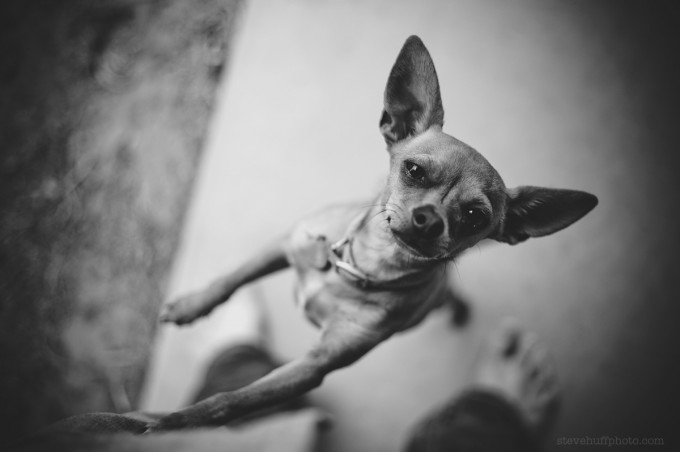
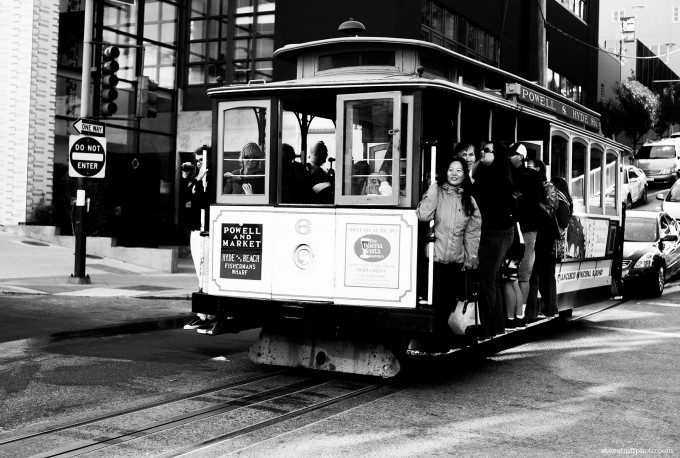


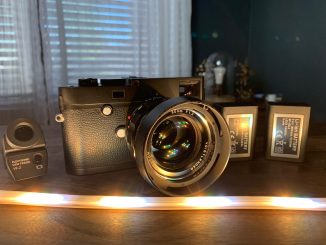
Hello everybody
I need info to find the adapter to Mount the hologon contax on leica M240
thanks
mike
Awesome article Steve! As others have said, I was likewise sitting tight for a certifiable audit of this camera. On the off chance that I had the cash, the monochrome would be in my grasp. In any case, I should respond to your “lifetime camera”
enregistreur numerique
https://enregistreurnumerique.blogspot.com
Awesome article Steve! As others have said, I was likewise sitting tight for a certifiable audit of this camera. On the off chance that I had the cash, the monochrome would be in my grasp. In any case, I should respond to your “lifetime camera”
Thanks you
nikon coolpixs 205
https://enikoncoolpixs205.blogspot.com
Film will always be film, nothing will replace that just like recording digitally will never be like recording on analog. I wish i was smart enough to really delve into the intricacies of why that is so, but my eyes and ears know the difference. There is a dimensional quality that always gets lost once information has passed through a computer processor. As if to say analogue is organic in nature and digital is…well digital.
Achtungen des Beheimheimlichkeiten.
there is no right or wrong in this – its a good review – but I’m sticking with the medium I love – medium format film – if you truly want to be different then digital is not the way to go in my opinion – especially at 8k plus! – the public still respect film shooters but look at digital as being 10 to a penny – indeed they look at digital images as being valueless such has been the proliferation of silicone based photography. just my two cents worth no offence intended to those that have different views.
@ James. The perfect negative is simply a start, a canvas to work with. Adams made extensive use of dodging and burning techniques, even masks, local bleaching, etc. That is why his prints are so beautiful. I can guarantee you, without a hint of a doubt, that his negatives of perfect density (since he had to print on graded paper in the old days), look nothing like the final print. Again, there is nothing wrong with that, because that’s the way it should be. You want to add drama to a landscape with clouds? You burn in. You want that rock to stand out a bit, or those beautiful fall yellow leaves to sparkle, you dodge and/or use localized bleaching with potassium ferricyanide. That’s what he did and that’s what is done in the darkroom to make a print sing. It’s the same with digital. In some rare cases, a file or a negative may look good enough for a straight print, but that’s rare. Printing is an art and that is how the final vision of an image is delivered. The zone system is simply a method to expose for correct tonal values in the negative. It certainly does not, by any stretch of the imagination, guarantee an exhibition quality print. I know plenty of people who can deliver perfectly exposed and processed negatives but their prints are awful. Take a look on APUG and you may get an idea. Again, at the end of the day, silly comparisons between film and digital, looking at a computer screens, are for people who are content with mediocrity and rather put their time into being armchair quarterbacks instead of buying a few great prints, walking into museums and galleries, talking to artist, taking workshops and gaining REAL knowledge.
What are the first steps when using the zone system?
Hi Steve,
Do you have any decent colour filters you can put on a lens to show us how, for instance, a dark red filter on the MM compares to a contrasty film print or photoshopped equiv.?
Cheers
J
When I get back home from this Sony event (Friday) I will have a full set of filters waiting for me at home and will go over them in one of the review parts.
The one downside of the Monochrom is that you don’t have as much flexibility in post to tweak the color input effect of a black and white conversion. With a color file, the color information is your filter. With a true Black and White sensor, you have to use filters on the camera to do the same thing. You shouldn’t see a tonal difference in a file shot with a K2 on the Monochrom, or using the channel mixer or black and white conversion in P-shop.
Where you should see a difference is in what makes the Monochrom different. No Bayer pattern…which is the best thing, and worth carrying around actual filters again. 🙂
Great article Steve! As others have said, I was also waiting for a real world review of this camera. If I had the money, the monochrome would definitely be in my hands. However, I must react to your “lifetime camera” judgement and whether it can replace B&W film: 8k dollars is a lifetime of film for me! That should buy me over 100 bulk rolls of the most expensive types, over 2000 rolls with 36-exposures each to be used with all the cameras that I have collected so far, using many different lenses. Not a lifetime, but probably 10 years of a good and fun film-based hobby… but if I had the money…. 🙂
It has been said that the M8 can rival the M Monochrome for black and whites because of its lack of a proper IR filter. Although I know it cant rival the iso.
There’s an inherent problem in comparing these digital files to film scans, and asserting the Monochrom as “better.” In the examples posted, as would be true in any other situation, the beauty of the film is that those images look like they were ‘sketched’ with a pencil. The digital files are sharper, certainly. They may show more detail. THAT, though, is not where ‘magic’ lies. Imaging that so closely resembles reality is just not as interesting as the INTERPRETATION of a scene that film brings. If your interest is in the most ‘faithful’ depiction of a scene, then, sure, digital is your baby. But, this reminds me of the early days of digital video versus film — video just looked too… ‘real.’ If i want to see ‘real,’ i need to do nothing. It’s all around me and i experience it in every waking moment. Photography is interesting when the medium is more of a component of the experience. Sorta the reason why i must employ emulation filters and such when i do use digital – to bring some semblance of something organic back to the picture.
So, yeah, the Monochrom is interesting, in and of itself, as a technical exercise. I still haven’t seen a compelling image from one yet — at least, not one that hasn’t been transformed into something that looks more like film, and when that happens, you may as well be using a five year old consumer-grade Canon.
Very interesting comment. I shot 80% film and 20% digital and I stick with film for the reasons you say. But when I shot digital I never use such emulation filters because I feel the decision of use them is somehow kitsch.
Thank you for doing this.
As a die hard film guy I am seriously looking at the Leica MM. I have some decisions to make before I take the plunge but one thing that does NOT bother me about the MM is the “flat” images. To me that a major plus actually. When I shoot black and white film I try to develop my negatives relatively flat. That way I have the ability to add or remove contrast when printing in the darkroom with multi-grade filters or when scanning the negative. I consider this no different.
Andrew, that’s exactly how you want it. Frankly, I really don’t get the “flat” comments. Files need to be processed, just as negatives, even perfect ones, need to be dodged and burned on paper, prints bleached, toned, whatever. Digital is no different. People that comment differently just don’t have a clue.
Oh? So the perfectly exposed, perfectly developed negative doesn’t exist? Well…
Michiel,
I entirely agree. If you don’t get it right, or as close to, in the first instance, whatever one subsequently does has to be a compromise. You can’t get back what is not there in the first place. I developed my negs to a higher gamma as I was using a cold cathode enlarger. This was normal practice. If one used a true point source or condenser enlarger, negs needed to be of a lower gamma to counter the harsher light source.
Did I say that, Michiel? Don’t think so. What I said is that, even perfect film negative will need some form of processing in the darkroom. Just ask Ansel Adams. He certainly knew how to expose and process film, and yet, his beautiful prints are the result of extensive manipulation in the darkroom. I develop my perfectly exposed negatives to a density range of 1.6 for silver. That only means that they will fit nicely on grade 2 paper. The bells and whistles come at printing time. So, a Leica Monochrom out of camera flat file is just a beginning. It doesn’t need to look pretty. It just needs all the information that will give an artist the means of making a good print. Does anyone know how to print here so maybe there can be an informed and meaningful discussion?
Ansel Adams prints were the result of calibrating the tonal range of the film with the camera, chemistry, paper and enlarger. This resulted in there being very little manipulation at the printing stage. A perfect negative for a perfect print. 🙂
You are joking, right? He was a master darkroom manipulator. All of his prints are the results of incredible darkroom gymnastics. This is NOT a negative comment, by the way, just a simple statement reflecting well known facts.
Maybe you know something that I don’t but I never came across any such evidence when I carried out a study on him when I was training to be an exhibition printer. Maybe he did but it wont be relevant to his Zone system.
Manipulation is probably the wrong term to describe Adams. He introduced a set method to the process, which required the perfect negative. He was a genius and it all worked, I know because I did it.
Maybe you must take a look on this James: http://www.youtube.com/watch?v=3CqMwJIWpA8
Zone system was important to have a good departure, but then the print processing was another stage.
Now here is a Leica that, if I ever can afford it, I would like to have…that and the new super duper fifty…but for us ordinary folks there are many solutions that will come close…After having a (jealous) look at the phenomenal detail of Steve’s images I quickly went out and made a similar size head shot of my son, albeit in flat shade light, with my 5d2 and pancake…… I was quite impressed with the detail of the hair and fine facial hair and probably in more direct sunlight etc would have extracted even more detail…so I am looking forward to Steve’s comparison with other digital cameras…of course with the fivedee I had to dial in quite a bit more sharpness, after all it does have the ‘handicap’ of a moire filter…but the end result is all that counts, how one got there is of absolutely no consequence, it had better be this way because very few of us can afford an M…but cudos to Leica for having the balls to bring out a camera like this that strive to achieve the best possible b&w image quality in a small camera…the fact that its ‘limited’ by having to use colour filters over the lens is no more of a ‘handicap’ imo than having to use an inaccurate viewfinder…some folks love it and some hate it ( I am with the latter) but if I could afford this little mm then I am quite prepared to put up with the ‘inconvenience’ of rangefinder focusing and viewing to get this quality….the lucky nikon owners of course don’t have that dilemma at all…
“Well, every digital camera in existence, even film cameras, will give you files you can use right from camera. If you want to take that extra step and give more life to your photo you may want to process.”
so true, so true
I just received my Monochrom and I LOVE it!!!! All I can say is thank you Leica!
One day people will fondly remember the day when a Monochrom only cost $8k. When Leica stops producing the Mono, the price will go through the roof. This is a special camera, something that is rare in this day and age. Once the right people get their hands on this wonderful tool and learn to use it, it will be lights out… I wish I could post some initial pictures. This camera brings back the love of photography…
I agree. I think that the cost of this camera will only go up long term. I really doubt there will be another Leica Monochrom or any other “Monochrom” to come along. It is a one of a kind, happy I have one. I love it.
Might it not be feasible for Leica or some other manufacturer to produce a similarly high-quality camera upon which the user could affix either a color-filtered sensor or a purely b&w sensor and quickly interchange them at will? That would seem to be the ideal solution.
Hi Rod in Annapolis,
I agree with you entirely. The Leica MM has won my heart back to B&W, manual focus only photography, it’s brought back art to image creation. Only what you want is in focus. Leica have hit the nail on the head or me. It’s a lovely machine. And yes, Steve, you are so correct in saying 50mm Summicron is a worthy lens.
I read somewhere that Leica tried to mimick Tmax 400’s response characteristics in the Monochrom. The images certainly look more like Tmax than Tri-X. More in particular, they have the gradation of a soft and slow, slightly underdeveloped B&W film. Undoubtedly, as Steve metioned, that’s only the starting point, and you can probably create the likeness of any B&W film in existence in post processing. But why would you? What’s wrong with digital looking B&W?
Maybe it’s a matter of taste, but digital looking B&W in general is awful. These days many people that never shot film don’t recognize the difference or maybe yes but they don’t mind about it, they only shot and think because it’s B&W it’s ok.. They never see the subtle aspect, the richness, the structure, the render, the way in which film catches the light, so different from a pixel. Others that have shot film prefer digital anyway for easiness and convenience, but few of them will say that they prefer the digital look. For that reason you have so many filters and ways to mimic film, but it’s only that… mimics, not the real thing.
@Illf:
I for my part have been shooting predominantly B&W film since the 1970ies. Digital was not my thing until very recently. But, just as I embraced the advances in film (I _LOVE_ the TMAX rendering, and way prefer it over the older Tri-X or HP-5 rendering…), I do see something in the output of the Monochrom – the RAW files OOC may be a bit soft, but by that they offer all necessary possibility for proper post-processing. And there is nothing wrong with that – the traditional B&W print got its bite and grit from the manual post-processing in the lab, not from the ‘OOC’ undeveloped negative.
To start you need a better scanner to bring out the best in a black and white silver negative;one with a cold cathode lightsource such as a MINOLTA DIMAGE 5400MK1 or an imacon.You could also choose a sharp negative.
The,yet another self portrait in a mirror,shot;looks like a waxwork,tri-x just looks real,so it seems that this camera is taking you one step away from reality,not a leap nearer to it.Without treatment its files do not display reality ;this makes this camera useless for any serious photographer.
Hopefully Im wrong and the initial results will be buried once those lucky enough to use it understand it a little more.Im sure though that its secret does not lie with silver effects pro or any other digital makeup,this is a chance for undiluted digital to shine and if this camera cant elevate a pure digital signal to the heights of a lowly tri-x negative then digitals future is a sad one indeed.
@Neil:
I, for my part (avid and rabid digital-hater for ±35 years of my ‘photography career, only in the last three years I have added digital to my portfolio, still own and use ‘film gear’ = Leica M, Leica R, Plaubel and Mamiya medium format), do not see your problem. Grain is nice, but no grain is in many cases better – ok, one has to get used to the ‘rendering’ of digital sensor matrices and take care of it in post-processing. The Monochrom handily does away with that, and renders like very fine grain emulsions (very low speed panchromatic ‘documentation’ film with special processing) – only that the Monochrom does do this at relatively hight ISO, thus unshackling the photographer. One can discuss the price tag (which is too steep for my taste, so I went with the RX1, and wait for the next generation Monochrom to settle), but not about the quality of the files coming out of it. Postprocessing is a matter of taste, though… I might do some things differently, but Steve stays in line with his usual style, and I appreciate it…
(PS: Thanks to Steve for the interesting blog…)
I know ive said a few times M9 compared to M3 is overpriced gadget
BUT BUT with M9M i would be willing to pay the $$$$ IF i could use it for my livelihood to feed the family 🙂
I looove B&W, lOOoove looking for high contrast, light n dark, shadows
Developing these in film the way i want, i just dont have the Ansel Adams skills.
I worked in a camera shop selling developing gear & i dont want to go back to developing.
Ps. ” I said the Monochrom needs to be compared to medium format more than anything..or even a Sigma DP2m ”
hehe 🙂
Maaaaan why oh why Sigma pleeeeaseee release an interchangable and designed like a M or X100, XE1.
Hi Steve,
Thank you for your review…..
I was a guy who only do films in my MP and M7, and will never think of buying a Digital Leica since digital came out years ago, but when MM came out, I was just thinking that who would want to buy a camera with B&W images!!
But then I read many articles on the net and all of your articles about MM, I am strat to think this is a perfect camera for me(and many people loves B&W)
I used to shoot in film, develop by myself at first but then got lazy and no time, have somebody to develop for me then scan to my computer with a few rolls for a WHOLE DAY.
I totally agreed on the part that you mentioned it’s a life time camera and it’s in DIGITAL, hee….
I have clicked all your sponsors trying to order or but…. most of them are our of stock…. Any idea of how to get MM?
Thanks again for your review, you really push me getting MM(I am glad)
Cheers,
Tony
Thanks for reading. I believe that most dealers have a waiting list for the MM as Leica id SLOWLY delivering this camera to them..very slowly. All you can do is pick a good dealer and add your name.
Hi Steve,
The MM is definitely an intriguing tool, any chance of testing this camera for its IR capability, if there is any at all?
I value your comments. Thanks.
Looks good. The only thing about digital images is, when they come to end of what they can do, they go artificial. Were as film just grains away. A Nikon F2s 50mm f2, 105 f2.5 nikkor. Tri-X / 3:1 Acufine. With a Omega and a Schnieder Compenon S 50mm f2.8, were my tools of long ago. Now, I use a Scanner, Nikon SC 9000ED. I no longer process my own negs and the print them with an enlarger. For me that makes a big difference. All my scanned in images are now digital and have that look. going from image to print via analog, they look different. B&W from image to paper, is an art fourm on to itself. This is not a judgement, but a statement.
Thanks for more equipment porn – what I love your site for. When I first heard about the Monochrom, I laughed. Now I see the point. Filthy expensive? Yeah, and honestly I’m sure they could make the price a little lower if the wanted and bring it into the range of more really good photographers, rather than making the cutoff have more to do with income. But they know very well that the high price just burnishes their reputation; hard to blame them.
I’m very impressed by the resolution and sharpness. As it happens, I decided last night to see just how much detail I could get out of some of my old medium-format shots on TMAX with my scanner – an Epson 4780 that I’ve had for several years that claims to go up to something ridiculous like 9600 ppi. I scanned at 4800 and found that really it gave no more detail than 2400 – and I could see that there was more in the film that it wasn’t getting out, but not all that much more. If you want to compare the Leica shots above to what I can get out of a very sharp lens on a very sharp MF film with a decent consumer-level scanner, here’s the shot http://www.flickr.com/photos/sesquiotic/8058439954/ and here’s the highest resolution I could get from my scanner for it http://www.flickr.com/photos/sesquiotic/8058439954/sizes/o/ . I don’t really think the Monochrom is at a disadvantage — although I could shoot and process 700 rolls of MF film for the cost of the Leica.
Very good scan from a flatbed scanner and a very nice image too. A real comparison would be to make large prints I guess or using a much better scanner like the Coolpix 9000. But your image is still very good as it is, so why do a silly comparison looking at fine details 🙂
It seems to me that a Leica like this is not a just a product. It is a statement!
The quality of it is awesome but it was clear to me because even the B/W stuff from the M9 I use is alrady way better than anything I saw from their competitors.
Luxury generated through echnology itself doesn’t matter. We still do not have WiFi, GPS, Bluetooth or even video here. A camera like this is not able to things on its own. No smile detector… The photographer is allowed to make the pictures. That’s what i like on these cameras and why I use them.
Good job and nice pics.
Best regards from Peine/Germany
Thorsten Lindloff
Hi Steve, glad somebody who knows what they’re doing has got one! I’m looking forward to stealing, I mean homaging, all your processing techniques. 😀
Quick query on alien skin exposure. It’s a fair bit of cash given that SEpro comes with the camera for free – is it worth it just for MM processing IYO?
Hi Steve, great review as always! Although I feel I have to pull you up on “This is about as good as it will ever get for B&W only cameras.” That seems a bit presumptuous on reviewing the first ever B&W only camera!
It is not the first ever. Kodak launched the DCS 760M around 10 years ago with 6mp monochrome sensor. It was pricy, around 10k. D!RK
OK, well you know what I meant! There is certainly no real competition over the top “B&W camera” spot.
Great review Steve; can’t wait for more. The MM is going to prove to be a very interesting camera in use, for a variety of reasons, and I’m seriously debating one myself. I’m hoping that the post-production doesn’t turn out to be too laborious though; it’s not for me with film right now, even with scanning. Glad to see you’re enjoying the case from classic cases in the UK. He made one for me too, for my M9, and will easily customize for people using thumbs-up and also thumbie. Highly recommended.
Steve,
Is there an auto facility built into the MM software that, sometimes, recognises when you are taking an image looking at a mirror and laterally reverses it? 🙂 Right way round with you and your son, but the MM has left the image of just you as one would expect when looking at a mirror. Just a bit of light fun. 🙂
Its one more step toawards killing off tri-x. Im sure there wil b very convincing film grain emulators to come on the market to make the MM look like film and satisfy even the most jadded film shooter. There is just so much detail and information in the files for manipulation. However, film is always going to have an appealto those who love printing one of a kind prints in the darkroom.
Icing on a cake of digital camera this Leica MM, isn’t it 🙂 Anyway – I really enjoy your passionate way you do this review, Steve. So far I can only say that the amount of detail is really staggering. I am 6×6 and 4×5″ shooter so I do not get impressed by numbers easily 😉 and the photos you show here are very different to what a film photos would look as digital and film respond differently to light – but I really like what I see.
On the practical side – you have mentioned that you sold the M9-P. I am wondering – is your pro work dominated by BW or you cover the color with some of the mirror-less cameras? Or do you plan to get a new ‘color’ M body in the future?
Hi Matus
“the photos you show here are very different to what a film photos would look as digital and film respond differently to light – but I really like what I see.”
i believe this is due to film being three layers, thus the bottom layer is impacted by the middle and top layer, the middle by the top.
Bayer is just one layer.
In time we will see Bayer 3 layer which will react to light more like film.
Currently as we know the only sensor that reacts to light similarly as film is Foveon.
Robo: It’s not a question of «more grey» than other cameras, but of more greys’. If you have ever done any paper processing in a darkroom, you may be familiar with Kodak’s grey scale slip. This is a slip of photographic paper with graduated blocks of grey, going from pure white (the white of the paper) to the deepest black that the paper is capable of producing. The slip displays 20 distinct shades of grey (I count pure white and pure black as shades of grey here) What you see in this slip of paper are 20 very distinct shades of grey – each shade of grey being clearly darker – or lighter – than its neighbour. So we can say that the Kodak slip displays a palette of 20 greys. Now, if you take a normal lead (graphite) pencil and draw on paper a similar scale, then your whitest white will be the white of the paper (of course) and your blackest black, will be the equivalent of grey #13 on the Kodak scale. Now, remember, we are talking about greys’ that are distinctly, visibly different from one another – visibly distinct to the human eye (with oil paint you have between 7 to 10 greys only!) What I would expect with the Leica monochom is the ability to reproduce a grey scale with a very, very clear difference between each grey value: the 20 step scale would be a cinch to reproduce and maybe even a 30 step scale. A cheap point and shoot camera would not be able to show much difference between each value of grey – you may see a difference, but you may have to strain your eyes somewhat as the greys blur into one another (you may only get a zero to 15 scale). Think of a black and white photograph reproduced in a newspaper – how many greys would you be able to distinguish? Compare that image to the same photograph printed on photographic paper by a skilled artisan – how many greys now?
Great points KEJE, I feel that the reel advantages of the MM will be realised by skilful printers who will be delighted with the enhanced greyscale this camera has to offer.
Would like to see a side by side comparison of the same image shot with M9 and M, both processed with Silver Efex Pro. Only then can we judge if there is a perceptible difference. When you drop 8K on a camera you’re going to want to see a difference. The danger is that you are the only one who sees the difference….
It’s like Riedl wine glasses. Riedl’s tag line was “wine tastes better in a Riedl glass”. When volunteers were given two glasses of the same wine from the same bottle and were asked “does the wine in the Riedl glass taste better?” the majority concurred that it did indeed taste better. However when the same test was done where the volunteer didn’t know he/she was drinking from a Riedl glass, nobody could say which glass of wine tasted best.
It’s easy it look at an image a say “doesn’t this look amazing”. We need to see it side by side to say if it is better. I’d also like to see a converted image from a Canon/Nikon for good measure.
Excellent and highly valid points made there Paul.
One of the worlds greatest wine writers has only tasted Ch Petrus from a plastic tasting beaker but still thought it magnificent. Riedl dedicate themselves to making very good glasses which for some enhances the experience of drinking fine wine, you don’t need a Riedl to enjoy fine wine though. In the case of a black and white only sensor there is only one choice at this point in time. The only valid comparison is probably then between non AA filter cameras (of which there are few) and the MM, and then again the comparison needs to be of a print and not what is on a monitor. I’m sure this will all come out in the wash over the next few weeks and I agree that some meaningful forms of comparison will have to be undergone before a final verdict can be reached.
comparison should be with AA filtered cameras.
MM is moire-free. an un-antialiased Bayer color camera, that’s apples & oranges, giving the Bayer camera a pass for what can be severe artifacting.
I see your point, probably best to have as wide a comparison as possible.
Thank you Steve, I am sure many will find this set of articles fascinating and helpful as you share your experiences about this exciting and very niche camera. I hope this camera is a success, personally I would have liked to have seen a much better screen and the ability to focus longer lenses with a sensor that provided live view. I feel that the MM may well be worth renting out for a look see before a purchase is made. Looking forward to more of your very valuable feedback about this ground breaking camera.
nikon scanners are not good in scanning bw-negative because of their light-source.
try another scanner, and they look much better.
I knew it: this camera will polarise opinion like no other!
For my part as a dyed-in-the-wool B&W RF shooter for over 40 years this a huge digital step forward, and I applaud Leica. In the digital age they’re back firmly promoting and pushing forward developments in the area they have historically done best – B&W image quality.
Many are critising the MM for the need of PP. I do not share this criticism. Thank you, Steve, for reiterating the very valid point that the capture of an image be it film or digital is only the starting point (for some) in the photographic creative process.
Whether working on a neg under an enlarger in the darkroom (as I did professionally for thirty years) or its digital equivalent with software on a computer it is no different in creative terms to bring an image to life and engage the viewer to rapture or dispair!
Judging from your early – and welcome – Part 1, the Monochrom produces basic files of stunning quality and enormous potential for skillful hands and enquiring minds.
What a wonderful tool.
First of all, many thanks Steve for both taking the plunge on spending the cash on the new Monochrom so we can actually get some real idea of how it performs, and secondly thanks ahead of time for what I believe will be a very revealing series.
I doubt I will ever own one, I just can’t justify the cost and I have other tools and methods that work for me but the whole concept is intriguing. Great mono has really remained quite elusive in the digital age, it’s not just the cameras however, printers and inks have also conspired to deny me (us) of a truly convincing end product. I hope this new Leica helps solve the issue.
One issue I see as an impediment that is that removing the colour info from the capture will somewhat limit the usefulness of the files. Yes I realise we can use filters and I have worked this way for over 30 years. No the issue is that I often make several extractions from the one file using different channel mixes then combine them as layers for no compromise tonality across the entire image, with the Leica you have only one choice ( made on capture via filters), then you would be faced with vastly more demanding dodge and burn processes for the same result.
I guess the issue for me is ” would the resolution and general quality advantage outweigh the limitation”.
Looking forward to the next instalment.
the price is insane … a nowadays cartier bresson could not even afford it … that’s sad
Impressive!
Very promising images. I wished I was a professional photographer… I’d have my order placed already!
Your “Monofront” picture also shows that it’s a real beauty. It’s the first time I’d prefer it over a silver verson. With the case and that lens, it’s simply gorgeous. Indeed, I agree that all this and the RF concept puts you in a certain mindset. And I agree that that’s a very important factor too to how one takes pictures.
Also, I agree that this can be a lifetime camera. Ten years ago, I’d never have said that about a digital camera. But with todays IQ, one gets more that one will ever want or probably ever need. I guess, when Sony would launch an IC version of the RX1 (with build in EVF), chances are great that that will be my lifetime camera.
Sharpness is just one of the elements of making a picture, so is ISO (or grain).
like the Portret Artist can Use many materials to make a portrait…Crayon, Cole, Oilpaint, water paint you name it.
So That the Monochrome is so sharp it will be of benefit for those who seek Detail.
Shooting B&W on a 400 ISO and than scan, sure than it is Digital, but the grain was scanned to.
Sometime I like to make pictures with B&W only and much grain to support the image..
A Leica M9 can help you with that 95% of the time, Silver Efex 2, Lightroom what ever can help you
bring a little grain and different impressions. But it is not the same as B&W from a Leica MM or A Leica M3 shot with Tmax400…
So don’t seek for the one B&W camera that make all others obsolete, it won’t…. When TV come, Radio didn’t disappear….
So Leica MM is just another camera but focused on a special part of Photography…If that’s the only thing you want, than the L MM is the best thing at the moment.
Otherwise it’s allowed to work with more than one tool and even Film will last some time, just for the fun or Art’s sake
The first MM files I see which I really like. Quite impressive. Now the question is, whether the new apo Summicron would make any noticable difference.
I think it is an interesting camera for and output is very detailed, but why all this talk about sharpness, cropping and pixel peeping, what has that got to do with photography and art?
…anyway and regardless of the comment above I think the picture of your girlfriend is very good.
Great review Steve, cant wait to read more about it
Damn dude, you are good! I am one of the naysayers that dismissed the Monochrom, but the way you eloquently write about the camera and the images you’ve posted gives me pause and makes me rethink the whole B&W camera thingy.
The images are hot, and I concede my converted M9 images don’t have nearly the sharpness or detail of the Monochroms’.
Enjoy your new camera, can’t wait to see more!
That’s only going to be interesting to the two people who have a Sigma camera
Or to give people an option if they can’t afford a MM. Add the 2 people that would be swayed and you have 4. Whole different ball game now.
I think it would be a great comparison, and the more people that I show my DP1 stuff too, the more that end up getting one.
Sigma’s cameras sell well in Asia, particularly Japan, which is the primary market they cater to. I know it’s hard for us Americans to believe that there’s markets out there other than ours, but there are. We’re lucky companies like Sigma, Pentax and Ricoh even bother to make their cameras available in North America at all. And to be honest, we’re lucky Leica bothers as well since the interest in their cameras is quite low here compared to markets like Russia and China who can’t get enough of them.
I’ve seen some samples of the BW output from the DP2 Merrill and, some have been absolutely spectacular both in sharpness and tonal gradation. So I think comparing the MM to the DP2 Merrill would be a truly interesting exploratory. Would love to see how two different cameras with two different sensors (and optics) each having their files tweaked to the best of their respective workflow’s abilities would pan out. So Steve, it looks like you’re just gonna have to fetch that puppy back. (You said you would. I saw your knees buckling under the responses you got from your amazing review…which, by the way, was a major influence in my own decision to look into and eventually purchase one!)
I’d really love to see that comparison as well. I do know that at higher ISO the Sigma will start to look like C41 b&w pretty quick (because that’s what mine does) so you won’t have the sharpness that the MM has. It’ll be interesting to see how they compare at base ISO though. The subtle shades of grey that the Foveon renders when in B&W mode are so gorgeous that I’m surprised there aren’t more mono shooters that use them.
/Users/stewartscot2/Desktop/L1000353.JPG
I totally agree with your thoughts, I shot at university as a photojournalist (student), mono is different to colour, that doesn’t mean you need it in a good image, you don’t. If the image is good enough, colour can be a distraction to it’ effectiveness. I too have found a ‘real’ camera with this fantastic machine, I’ll sell all the non Leica equipment I have and go back to shooting in mono. People might call us dinosaurs, they were around on the plant for long time, more than we will be.
hey Steve
WOW!!! debbieportraitneopan1600crop is amazing-I don’t think I could get enuff of this camera if I was fortunate to own one…it’s images like this one (beautiful subject BTW) that sell cameras!!
continued success Steve
Greg
Nope – can’t replace film. The sickly hues and the clean plastic doll characterless ‘detail’ just doesn’t turn me on.
Ok can someone please show me an example of what is a) not flat, b) not lifeless, c) good tones/ greys, in a film camera?? I really need to understand why people are so quickly dismissing what i see as incredibly detailed shots! Can someone post a link of pics that absolutely destroy the monochrom? We need a benchmark for Steve to work on here. Steve has laid it out all on the table with examples, can those who say film is better please show example of what is better?
Good question.
I must admit I see the greyish thing too. But I also have to admit that my B&W experience is very very limited. Even more so when it comes to B&W film. Of course that makes me less informed, but perhaps also less biased, I don’t know.
Perhaps this is not too bad a representation of what we all mean when we talk about a B&W film look? In any case it’s the first thing that crossed my mind when thinking about your comment.
^^This post makes very little sense if you miss the link it contains:
http://www.fluidr.com/groups/b-w_film/random
🙂
I also posted a link, but looks like it was Not posted or edited out. Not sure why!
Mine actually came through, but it’s easy to miss because of the colour applied to links in this comments section.
Too many shades of grey I’m afraid… 🙂
I have to say, those are really nice photographs.. thanks alexander for sharing the link.
but i have to say its the subjects that give photographs the “soul” and “life”. film doesnt automatically grant you that.
The monochrom as seen here, gives you the option to achieve that degree of sharpness and detail.. you dont have to always exploit that, but you have the option to. which means u can get even more creative with 1 camera.
it lets you focus on getting the composition first, then later you can manipulate it to suit what u may have in mind.
To me the question is: is there really a different look to the shots in this article when compared to the ones in my link? And if so, is it really that fundamental, or is it only about processing differences?
Also, what would you expect from a ‘perfect’ B&W camera in the first place? Something you’ve never seen before, or something you’ve been seeing for decades?
Don’t get me wrong: I don’t know. I can imagine this (link alert! :)) spectral response thing to play a role, on the other hand you’d expect Leica engineers to in any case have paid attention to that one. Perhaps it’s more like what you say: the files have everything in it, it’s just a matter of knowing how to take full advantage of it.
Hey now my link doesn’t work either. Not sure what’s going on.
One more try:
http://chromasoft.blogspot.nl/2012/05/leica-m-monochroms-spectral-sensitivity.html
Thanks Steve
Just sold my soul (and my M9-P) for an M Monochrom myself, Steve, and couldn’t agree with you more about this camera. The files are flat and smooth straight out of the camera, but there is so much detailed information contained within them. Even lightly breathed on in photoshop, they are breathtaking. Love your site, by the way – that, combined with your unbridled enthusiasm are half of the reason I ended up selling all my pro Nikon gear and buying an M9-P in the first place. Thanks for the review – I look forward to your forthcoming installments.
The more samples I see, and the more reviews I read the more I WANT THIS CAMERA!!…I can’t care less about the “new M”, all I want is the MONOCHROM! Thanks Steve for the review!
Just to be clear, What exactly does the 100% crop mean?
When the photo is enlarged to full size you crop a piece of it (usually where there is nice detail) then overlay it on the zoomed out picture so you can see how the camera/lens resolves in its native size or to see how the camera handles high ISO.Example: the shots where Steve took photos of himself in the dressing room.
Thanks John, I thought it was the screen’s pixel for pixel view, but wasn’t sure.
It means that instead of looking at the content of the picture, you’re examining it like a corpse in an autopsy.
It’s a typo. Like when you write bonk instead of bank.
Very nice- the shot of the dog is great.. you can almost see the wetness on his whiskers!
Note to self- Play Lotto & Powerball
Interesting. I still see clipped highlights in young woman’s (fiance’s)right cheek, point of the nose and chin. Also, Steve, on your head in three pics. Overall, very defined, harsh IQ. Maybe my eyes are too soft.
JJ, I noticed this as well. But this is early days in Steve’s experience with the camera and thus how to gauge the correct exposure without blowing the highlights. With each new digital acquisition, I had to “learn” its metering peculiarities before I got images with which I was more or less satisfied.
I have read that the MM can blow highlights easily as there is no latitude that can be pulled back in PP.
Are you sure? Maybe the eyes are too sof because of the fomr, not function, functioning as form over form, yet not for form but for function, form but no form, function but no function, form…..function.
Thanks,Steve, for great part one,and looking forward to the series. This has been very helpful in firming up my decision in relation to MM. As you say the price is high, but at least we have the lenses. A huge investment for those new to Leica, as I guess this sensor needs the latest lens designs to get the best from it. Enjoy!
Steve, this is simply not fair!!!
I always liked the idea of a Monochrom camera and its is just great the Leica had the balls to come out with. however, I wasn’t so sure about the Leic M Monochrom… esp. with that price tag.
However after Photokina the whole thing turned. That Monochrom gallery was just jaw dropping and the Monochrom felt just like a Classic M… Much like the M9P.
And now your review…….. I just can’t afford a new one……
B
Great camera and a great writeup, Steve! I do not care for the look of the files out of the camera like many folks, but it’s hard to argue with the results once they have been processed. I process every image anyway, why not with the MM? But, I have to say I am still just a bit skeptical about your claims of; “absolutely insane detail and resolution that kicks not only 35mm film to the curb but also kicks the the M9 along with it.” This is not evident from the examples. It is different, not necessarily better…. But what a cool camera and concept! It may in fact be a replacement for film for many, many users. More power to them and to Leica who clearly make the best functional cameras in the world! Looking forward to your next post, Steve!
Tom
I don’t know what else you did to make these pictures looks better than the other articles’. One thing I know for sure: ladies will like Leica Monochrome. Because they can save a lot of time and money on costmetic and still looks very pretty on the pictures.
Lol! Now I found the ultimate argument to convince the wife we (!) should invest in this camera. Finally she looks great on the family pics without pre-processing, i.e. makeup.
Rick
I’m a film guy but I’m also objective and a realist. That said, I have owned the camera for a month and I pretty much agree with everything that Steve has stated here. No, it is not a camera for everyone, because it doesn’t do color. Aside from that, I see no faults. Is film better? Who cares? That’s really hardly the point. It is always about the image and for me, mostly, the final print (silver, the old fashioned way, or from digital negatives, and now copper plate photogravure). The Monochrom is a fantastic “tool”, no matter how you turn it. Can Delta 100 processed in Rollei RLS give you more lines of resolution? Yeah, if you like to look at your negatives under a microscope, but who does that and who the heck cares? I just bought two gorgeous 16×20 prints by Vivian Cherry, shot in 1955 with her Contax and Tri-X, for $2,500 per print. Trust me, they are plenty sharp and the value of a great image/print is not in sharpness, pixel peeping, dynamic range, and all that jazz. It is always about the image, the print, the artist. Today, bitching, moaning, nit-picking, and constantly comparing or debating film vs digital, while consuming art and junk on a small screen on Facebook, or Flickr, is a huge disservice to a good photographer, a camera and a lens.
I will still shoot film because there are things I can do with it that the Monochrom may not be able to do, because film can look different (especially in the grain dept), and I do enjoy the process. Aside from that, the Monochrom is a dream camera for those who love to shoot exclusively black & white. There are no extra steps involved in conversion, and well exposed images have plenty of meat to work with.
As far as exposure and dynamic range…no, it isn’t Tri-X. You can’t be sloppy if there are highlight details you want to retain. Learn how to expose, carry a small incident meter..or use sunny 11. Yes, it works, perfectly.
Exposure and DR remind of when I shoot my Sigma DP1 on ISO 50…amazing results, but you better know what you’re doing. 😉
Well, I suppose, if you like your people resembling plastic mannequins, the M photo’s look crap, relatively speaking.
Ibraar, one really has to be fair and make informed assessments. To make a fair judgement, one would have to look at 1) A fine print from a MM file, from a capable photographer/printer and/or 2) (and a distant second), if one was to make an assessment of ANY file rendition or spectral response of a camera, and certainly the MM, the use of a hardware calibrated monitor such as an Eizo, is an absolute must. Anything else, really is uninformed, Monday morning quarterback chatter and it’s a waste of time. I’m not trying to be harsh here but that’s reality. Monochrom files look DRASTICALLY different on my mac monitor (and not that great actually) than on my Eizo, which displays them correctly and how they should be. More so, I dare anyone to be able to tell the difference between a silver gelatin print from a MM digital negative and film. I’m not saying that one is better than the other but the truth is comparisons are futile if one knows how to expose, process and print. Unfortunately, most seem happier spending $8K on a camera and then flood Facebook and Flickr with meaningless crap which is then used by peepers everywhere as benchmarks for a camera’s strengths and shortfalls. That is absolute BS!
Ibraar
i wish i could share photos taken with my SD9 of my female friends smooth skin.
Im convinced no Bayer could have captured the subtle undulations of her face, the gentle changes light n shade,
M9M may well have made her face look plasticky who knows.
Util Bayer do become 3 layer we will still have no matter how high the resolution a certain look.
Sorry dgd, can’t agree with you. My friend owns an SD9 and there is really nothing special about it. Can look fine under good circumstances, but even an old Bayer sensor like the one in the Nikon D2H from about the same year (2002/2003) produces much better output than the SD9.
Sorry, it is actually and SD10 my friend owns 🙂
Sorry Anders ive had a D1H not a patch on the SD9.
And i used cheap m42 lenses on the SD9, decent nikon glass on D1H,
It was a D2H I mentioned not D1H. The D2H is significantly better than the D1, but maybe my friend is not a very good photographer or uses too cheap glass 🙂
How is D2H significantly better than D1H,
D1H had the larger pixels and was CCD : both these combined to give images that were just lovely and more pleasing than D2H. D2H just had some more resolution a CMOS sensor ie better at low light and more fps.
There’s no denying the high resolution. But detail is apparent in both. One has grain the other hasn’t . My point is that noise reduction and aggressive computer algorithms have turned detail into plastic like detail which isn’t pleasing . As Max said its all about the print, so comparisons are pretty moot. Both I’m sure would print pleasing photographs according to the skill and capability of the photographer and printer. I cannot however fathom how people can justify spending the amount of cash for a camera which will give them photos when printed not any different than any other full frame digital camera.
Hi Ibraar, had to look at the picture again (Steves girl friend) which I think was very good the first and second time I saw it. But after reading your comment I sort of agree with you, that it looks different than film and maybe a little plastic-like compared to film, but don’t you think we also have to get used to a different kind of output than film?
True what you say, but look at the hair , it’s like dolls hair, and the skin is pasty in the mm shot. That’s my own opinion on the characteristics of the mm file close up.and it’s all in the eye of the beholder. As I said above its about the print and ultimately you’ll get larger prints which are clearer with this than a 35mm M. But more pleasing to the eye?
The MM files are outstanding. I have many more to post soon – getting the hang of it and am in love with it 🙂
Steve, if anyone can make good looking photographs with this camera, you can. I’m looking forward to seeing you put this baby through its paces.
Great initial review. Beautiful, stunning image quality. Now, where did I put that $8000?
The dog and the one with Steve and son in a mirror look nice. Look like the pictures have some film rendition in them. The one with Steve’s girlfriend/wife looks funny on the right cheek. It looks pretty much like a water sponge with light reflected onto it. Overall, the camera is great. No question about that. It is a B&W digital camera to have for sure if money is not an object. It will help cut out a lot of troubles using film (even though it’s still digital and many pictures will frequently look tough and soulless). However, if the user is happy with whatever he or she has, then it should be good enough, anyway. The fact is, beautiful photography is not always about sharpness and details. Perfect pictures sometimes don’t have to be perfect..
I’ve got goosebumps all over me when I saw the details in the eye shots. Woah… What a beast.
Sadly not a camera for myself as I probably can’t live with only shooting B&W and most importantly cannot afford one at this stage in my life. 🙁
Steve, Excellent review. The 100% crop of the eye from the M certainly has amedium format feel to it. I wish you would stop with these reviews, they are having anegative affect on my bank balance! I am one of those people who live and breath black and white, I shoot with an M9 and an MP. Most recently i have just been shooting film. I did a comparison between the files from scanned B@W negs and M9 files using the film structure of those films in Silver effects pro. The comparisons were not done with straight scans, they were sharpened and contrast manipulated. for methe film won hands down. BUT seeing the files you have presented here, i think has convinced me to get the M Monochrome. The only thing holding me back is not knowing how the new M will perform. What will its files be like with the new sensor? and how well will they convert to Black and White. I dont think you did justice with yourfilm scans as a comparison though, they look like straight scans, i think you should have at least despoted them, sharpened them, and adjusted the contrast to present a better comparison
Thanks Steve, looking forward to the next reviews.
Hi Richard. Your comments were so interesting that I think you should submit a review of your comparisons to Steve. Perhaps Steve will post your review and we can learn more about your thoughts.
David I will do that, I did have the examples on another web site, in one of my folios, but I deleted them, It will not takeme long to create a few more. I think it would be good for Steves Audience. and i dont think it would have a great deal of sway either way for film v digital. But the results were inetresting, Steve are you interested in this?
Steve,
I think we’re all going to enjoy the ride of your review of the MM. So far so good!
For many of us this camera isn’t ever going to be a reality-which is no big deal. I still can get me B&W hit lots of other ways. 🙂
Would you consider printing images in this comparison? Perhaps you’ve already got that lined up and I realize that experiencing a print via the web…well it doesn’t really work as well as crops of scans etc.
I’m just curious if we pull back from 100% crops, which although impressive, don’t relate to what I might actually do with a favourite image.
I would love to read about your impressions of files printed from the MM vs something something on film.
Great read. Thanks for the ongoing fresh content.
You are right for sure. I have a D800E and it is very fun to use but just love the rangefinder experience. Love the focus patch. the manual focus. Would hate trying to photograph football with my rangefinder though. Oh, and anything 90mm and above for me on my rangefinder is just too hard to get good focus. Good thing there is something for everyone. It’s all personal preference for sure.
I agree with your comment about the low res crap LCD on the digital M’s. However, when I first got my M8 (going from a MFT Pany G1) I was using it ALL the time to see if I got the shot, re-take, etc. Now I ONLY use it for the menus to adjust ISO. I didn’t stop using it because the LCD blows (which is true) but because I no longer need to look at it; I know I got the shot I wanted.
You talk a lot about the Leica user experience but honestly it is true. There is something about shooting the M8, M9, etc. that is totally different and IMO simpler/easier to get the shot you want without thinking about it. On a recent trip I went back to my MFT Panasonic and I was totally confused… needed the manual… didn’t like the auto focus, didn’t like the scroll wheels, etc. I really missed my M8 and it solidified for me the special joy of shooting with a Leica M. Not sure I understand the Leica Monochrome (and would most likely buy an M9 instead) but there is something about these cameras beyond pixels, ISO, and crappy LCD screens. As you mention if B&W is your thing then this camera would be awesome.
Totally agree, Keyne. I still shoot a lot of film. I shot 10 rolls on a recent trip to Montreal with wifey. No time spent with the laptop, and no concern at all as to whether I got the shot. I always did. Fantastically satisfying. I still think well scanned TMax looks amazing. Needs no PP either.
Film will always be film, nothing will replace that just like recording digitally will never be like recording on analog. I wish i was smart enough to really delve into the intricacies of why that is so, but my eyes and ears know the difference. There is a dimensional quality that always gets lost once information has passed through a computer processor. As if to say analogue is organic in nature and digital is…well digital.
Buuuuuuuuuut…..if there ever were a digital camera that came close to being “alive”…the Monochrome would be it. It’s obviously shaper and carries more detail then film, but where I see this camera as a sturdy film supplement is in it’s tonal range. It’s as if you have the ability to match the likeness of any B/W film every made while still keeping details and smooth gradation in tact. I love it, I wish I could afford it but alas I’m a color man. I like shooting b/w but I feel like my identity is tied to contrasting colors. I’m happy for whoever gets to use one though and I look forward to Steve’s updates (really good idea).
I wouldn’t expect these grainy films to resolve like the Monochrom, but ultra fine grain SLOW films like Ilford Pan-F 50 ISO, or Adox CMS20. Adox CMS20 supposedly resolves to equivalent of a 500MP camera. That may be a bit of marketing talk but regardless I think you will find that fine grained film will absolutely destroy the Monochrom. The nice thing about slow films as well as you get wide open shooting in broad daylight without using an image-degrading ND filter!
“Destroy” is a big statement 🙂 Besides, you are then stuck with 50 ASA film. The point is with this camera you can shoot at 320 and it will be like 50 ASA film in regards to noise, probably even less noise. The Mono is versatil and can do it all. Low speed look, high speed look, etc. You are not confined to one speed in your camera but you have it all on hand at any time.
Haha yes I know it is a super strong statement but it was fun to use! Yeah i know the 50 ISO is limiting for sure and the Monochrom can be used in any (most) situation. I just like to make myself feel better for not having the $8k for one and sticking to film! 🙂
I hope you have fun with the camera and look forward to your in depth reviews!
CMS20 needs to be shot at ASA20 (not 50) to get the best result, and developed in Adotech, and make sure you know if you have Adotech 1 or 2..:-)
That said, any B&W film user should try it. CMS quality at ASA3200 with the MM? Well, now that is indeed a tempting prospect.
You can change film rolls. And have the benefit of being able to shoot Colour C41, E6, BW, different types of film, Panchromatic, IR, Lith film etc. Fast Film, slow film, play with different developers, and then actually have the physical negative in your hand to keep forever – and the best thing about Film is that it’s REAL!
it’s not computer processed algorithmic binary code manifested on a screen, whatever you use, however you use it the result is REAL! it’s like a REAL book compared to a Kindle device, or like an MP3 compared to a Vinyl, or an aeroplane compared to a flight simulator. Digital is a computer graphic.
But, it’s all relative, some people like film and a completely analogue process (mine is sort of hybrid as I print traditionally, AND project my slides, then scan them to ‘share’ online – and in this case, spending $8000 to share online is folly), some like to scan (such as Bruce Percy on his Mamiya 7 ((which is what the Leica MM should be compared to rather than a 35mm)) , some people like digital colour and the ability to manipulate and convert, others prefer a Mono camera such as this or the forgotten Kodak DCS 460m. It may be ‘like’ 400 asa film or 50asa, but…it’s NOT Film, and isn’t identical, and you can’t hold it! :))
+100 yes, that’s very nice with film bodies… you can put on them so many kind of different supports…. well in the old days, today we are more restricted , but still we have some variety.
First, lovely shot of Debbie and excellent processing, I always liked your processing style.
Second, about the “camera for lifetime”, not that i’m knocking it but I guess in these days, “lifetime” means till the next upgrade comes?:)… and I guess we will be waiting for the new Leica M Monochrom in about a year or 2? what do you think? I also wonder what effect would the CMOS sensor on the new Leica have if it were only monochrome – compared to the current CCD monochorom sensor, but I guess we’ll just have to wait and see….
cheers
Thanks! Keep up the Great work! Look forward to reading all about the M. I agree about Ken Hansen, I have been a customer of Ken Hansen for 20 yrs. Great shop!
Ken Hansen , is probably the most respected person in the entire photography industry .
He once operated the koolest store of all time , a legend .
Most importantly . . Honest .!
Once again, a wonderful review. Like I have stated many times before, I cannot justify the price for the life of me but I do admire it for what it is. I can safely say that B&W is my favorite type of photography and this camera just delivers (from what I can see here).
I must admit that I was a little worried at first because some of the images I saw from other users were a little pale to my tastes, but the way you processed most of these made me a believer on what the camera can do.
Looking forward to the other reviews!
This article and these shots are a HUGE step toward getting me to appreciate this camera. I always liked the concept of a B/W only Leica, but I’v ebeen extremely disappointed by the grey, lifeless files I’ve seen so far. These shots look like they come from a completely different camera than the previous examples I’ve seen. So I’m back to being very interested in seeing what this camera can do… despite the fact that unless I win the lotto, I’m never going to own one.
Shoot it yourself and find out….see if its limitations and strengths fit your style…. Before passing judgment either way…it may or may not worn for you. ESP coming from a NEX5
It really doesn’t matter if “its strengths and limitations fit my style” – I won’t be buying one, because I don’t have that kind of money. And if I DID have that kind of money, I wouldn’t get spousal approval to spend it on a Leica. I’m simply owning up to the potential for some great shots with this camera – because everything I’ve seen previously were flat and overly grey, and I’ve stated so in the comments here. In the interest of fairness, after seeing these shots, I thought I’d post something positive about the Monochrom.
Regarding “ESP coming from a NEX5” I’m not really sure what that is supposed to mean. Would it make a difference if my username was “AgfaGuy”? Because I have one of those, too. Or maybe I should be “CanonAE1Guy,” because I shot B/W with one all through highschool… but that was probably back before you were born. I shoot with a NEX5 now, so the name fits, I think.
Translation- “coming form an nex5 guy” means that your camera is not advanced enough to warrant a comparison to the great Leica MM. Only after you have seen the tones on the MM can you make a valid accessment. the MM is for serious pros, folks who value tones that cannot be found in any other camera, especially a lowly camera such as the nex5. Because not all greys are the same, some greys are more greyer than others, and if you don’t know the difference, it is because you never used a Leica MM, so you will never understand the value of the MM. What’s important is the things that the MM has that your nex5 does not have, no matter how trivial. The Leica MM has spoken, bow down to it’s brilliance. LOL
Thanks, Robo! That was pretty much the vibe I was getting. Good to know my “Spider Senses” are still spot on. =o)
Nex5guy, not sure about the spider senses, as it wasn’t my intent to be callous or judgmental. Please see my comments below. I wanted to offer an apology that my comment was taken in a way that I had not intended. It was not my desire or intent to seem judgmental. I have made a couple of comments below, that I hope will clarify my intended statement regarding differentiating the MM from other cameras, including the NEX series, which I have enjoyed (I have reported on my experience with the NEX-7 previously)…. What Robo interpreted…i.e. that the next5N shooter is not advanced enough to shoot an MM, is a complete misinterpretation of my very brief comment. Please don’t assume that this was the intent of my message. I apologize that it came off that way, and hope that you can accept this apology.
This is ridiculous and you guys sound like a couple of trolls. The Leica shooting style is different from most other cameras that feature auto-everything, including the NEX series, and that’s especially true with a dedicated B&W sensor. I’m sure that’s what Ashwin was talking about in drawing contrast between the two cameras. Why would you assume people were bashing you for your camera choice? Nobody cares. Be nice.
Could not agree more with you Brian, the anger shown by some people here about other peoples choice of camera is both shocking and bewildering.
Where do you see anger? I see myself defending nex5guy. Why is it that I’am angry and you’re not some uptight fuddy duddy who’s bent out of shape because someone has an opposite oppinion than you? If you think what I wrote was angry, man , you been living in a really shletered life.
Well said, Brian, and you are absolutely correct. Anyone who’s followed my posts and threads should know that I generally try to stay away from saying anything hateful or derogatory, and while I see that this post (written on my iphone while on a cross-country flight, hence the typo and brevity) may have been interpreted otherwise, I appreciate you and Peter giving me the benefit of the doubt. My partner has a NEX-5N, that I have shot on a few occasions. The experience of using the 2 cameras, irrespective of price or whatever else, is very different. The the NEX 5N IQ, while fantastic (why I got that camera for her), has a very different quality than the MM, even when NEX-5N RAW files are converted immediately to BW and worked with from that point on. I, like everyone else, read online reports and view sample images regularly, but when someone is “on the fence” on a camera, I simply suggest that they should try it for themselves (exactly what I did with the MM) before making or even considering a huge investment like that. Play with the files and see if it fits into your workflow. The MM is a very challenging camera to use, and as many have commented above and below, Steve has found a way to achieve a nice tonal balance with his editing, proving that it can present different images in different hands/workflows/etc….The think I love about the MM is the detail and tonal range in the midtones, which is both a challenge and a joy to work with. I have much to learn from the camera. Thanks again for your support. I sometimes have difficulty responding to such critical messages directed toward me, especially when my own message was so readily misinterpreted.
You seem to care to comment, Brian. So if you’re for the Leica MM you’re not a troll? I’m only translating what I think the comment means. but hey, sorry, I don’t have mutant powers of vision, Maybe you can spot the difference the grey tones the MM makes in comparison to other cameras. Don’t you think the emperor new clothes you’re wearing is a bit too tight on you?
“Sheltered life” ha ha, hardly mate. I have been around this planet several times and experienced both the good the bad and the ugly it has to offer. My comment was of course not in isolation. In your numerous posts you exhibit frustration,anger, sarcasm and a lack of contentment, for me those are negative emotions. What I like about this site are the positive, constructive and creative contributions from Steve, Ashwin and the vast majority of those who post here. Positive people get positive results in their lives, that’s why I gravitate towards those who make positive contributions, I and many others here like reading what they have to say. On the other hand I have yet to meet a successful person who spent their time being negative,bitter and frustrated. The good news is that people can choose to be negative or positive. it’s your choice, your responsibility, it always has been!
To be clear, I was never comparing the Monochrom files to my NEX camera or anything else. If you look back through the various Monochrom posts on this site, you’ll come across several instances of me making general observational statements about the Monochrom files appearing overly grey and flat. And I stand by those comments. I’ve been thoroughly unimpressed with the files I’ve seen up to now. Then Steve issues this post, and for the first time, I’m seeing files that I like coming from the Monochrom. So in my original post here, I tried to own up to the fact that this camera does have potential. If I was a troll, as Brian insinuated, I’d find something to continue griping about. But no, I tried to state something positive. If I was ever going to get called a troll, it would’ve been on the other posts when I wrote that the Monochrom files looked overly grey, flat, and dull. But all I got from those comments were people agreeing with me. Because they were accurate assessments of the general appearance of the files – not a comparison to my NEX and not pixel peeping at 100%… just overall real-world “these shots look lifeless”. And now in this post I see something good – Steve’s PP got rid of the grey haze I’ve seen in so many previous shots, and the contrast is up, making the shots pleasing to me. Doesn’t matter what camera I own or what my experience is. I hope to see more great shots coming from the Monochrom.
LOL. So what have we all learned here? That, a) the Leica MM can prduce very sharp files. I don’t disgree with that. b) The Leica MM has greys no other camera can produce? If we’re honest with ourselves i think it’s safe to say we all see tone, unless the MM greys are somehow more” grey” than the grey other cameras make, film or digital.
Hmm, maybe we need to “look” at photos rather than examining them. But maybe I’m wrong, maybe the MM greys are more “grey” than other greys. Maybe I don’t have cycloptic mutant powers and are not able to see “greyer” greys.
Thanks for the colorful commentary, so to speak….nothing else needs to be said by me…off to take pictures….well, tomorrow at least…
You’re welcome. Yes, go off to take pictures, you do that .Please take some more MM pics with more greys for us…greys that are greyer than the greys other cameras can make.
Exactly….
I rest my case. LOL
Great point. As Steve mentioned this camera is virtually impossible to get, even if you have pre-ordered. Stores are receiving only one MM per month. This means that, even if you were to travel around the world searching, the chances of finding a store with an MM on display are essentially nil. Why would they put on display a camera which is so scarce they all need to be sent out to fulfil existing orders. Your advice is, at best, useless and at worst an example of appalling self-aggrandising elitism mixed with rampant trolling stupidity.
ESP coming from a NEX5, mate that’s a really lame comment.
Vlad,
I agree. I hope we are not seeing the beginnings of the “I’m superior to you thou” because I own an MM.
Nex5guy’s original comment I took as an honest admission from his initial disappointment from seeing some less than inspiring images, to one of honest re-appraisal having seen these images that Steve has posted. Indeed he says Steve’s images are a HUGE step forward in getting him to appreciate the MM. And like many of us, financial constraints mean we shall never be able to own it. I don’t understand why Ashwin and Robo jumped on him just because he owns a Nex5, which, by the way, got high praise from Steve. No, it isn’t a Leica killer, but is that reason enough to look down disdainfully on Nex5 owners?
I didn’t “jum”p on nex5 guy, I was using sarcasm to defend him from that stupid ” coming form an nex5 guy” remark” Do I have to lay out a bleu print? Sheesh. LOL
Robo,
The problem with sarcasm is that unless one is practised in it, it’s meaning can quite easily be lost on its readers, as it was with me so, as with my reading of Ashwin’s original, but not sarcastic comments, I didn’t “get the message”.
Ashwin is to be respected for he did the gentlemanly thing and had the courage to admit some may not have got his original and intended meaning, and he didn’t insult my intelligence by suggesting I needed a blue (sic) print.
No matter how one corrects their message afterwards, it doesn’t change what’s been done. Anyone can say they didn’t mean to punch you in the face afterwards, it doesn’t change the fact that you got your face punched. Capeesh?
Vlad and TerryB, it was not my intent to jump on anyone. However, I can imagine that it came off that way by the brevity and bluntness of my comment. I literally typed that comment via a choppy-internet connection on a cross-country flight, via my iPhone….My intent was to suggest that with a camera of such great cost/investment as a MM, one best use it first, as it is definitely not for everyone. It was my true mistake to imply/assume that Nex5guy was inexperienced or anything like that. My girlfriend has a NEX-5N that I have used, and it does provide fantastic images. However, as a tool for image capture, it’s so different than the MM that it’s hard to compare the 2 based on camera utilization alone. IQ and file imaging is so different too, mainly because the MM produces such a different file than any camera that I have ever worked with, regardless of cost/investment/experience with prior cameras. As for judging images based on Steve’s images above and prior posts by myself and Guage recently, we all have differing styles, and I for one have much to learn about processing MM files. It was not my intent to “jump” on NEX5guy at all. I don’t intend to jump on the Sony NEX series either, as I have owned and enjoyed the NEX-7 (see prior reviews) and do find the NEX-5N to be a fantastic tool, albeit one that’s different on many levels than the MM (with the only similarity being the number of megapixels and the fact that both cameras take photos…they are miles apart in many other ways, not to say that one is any better than the other). One could even imply that the MM, by its lack of ability to see color, is inferior to the NEX series, but we all would understand the flaws in that argument, I suspect…
Ashwin,
Thanks for taking the time to reply. Much appreciated and fully understood. I know it is easy to be misunderstood and when we try to be brief, the trap can be larger! It is often the case that we know what we want to say but we have no idea of what inadvertent messages we may be giving until the broadside hits. Mea culpa from time to time.
Hey Ashwin! I’ve been avoiding forums to fight the GAS as I am preparing for THE big day (and need to focus all resources — including my formerly disposable gear funds for the big day). But just felt compelled to jump in and add a note to this discussion, because I know you are a class act, and had no ill intent. It’s ironic that the original recipient of the post is not even harping anymore. Yet, someone else is. Stay the course and let the troll be gone.
I enjoyed the review, and have an MM (retirement present to myself), which I love, with the Xpro-1 for colour. These really boring comments, though, have annoyed me. Why are you all sniping at each other? It’s meant to be about the camera rather than each other. For my part, the camera is wonderful. Can’t afford the more expensive lenses, so just have 35 and 75 Summarits. There is a quality about the pictures which reminds me of the poem, “Cats, no less liquid than their shadows / Offer no angles to the wind.” No pictures like them – technically the Xpro is just as sharp, and a lot cheaper – but in the relatively restricted situations which it is made for, the Monochrom quality is unsurpassed and – probably – unsurpassable.
Great review. Want one! How far can you get without using silverfx? I never liked that workflow and stayed within Lightroom. Is this camera only worth it if being used with Silverfx? Thanks and have fun. D!RK
Dirk, check out these guys: http://x-equals.com/blog/
I use their presets for both colour and B&W. The results are awesome.
Cheers,
Greg
Thank you Greg. This may be the perfect fit for me. It looks like that I only have to deal with one file and not a copy that gets imported back into Lightroom. Thank you. D!RK
I am a huge fan of black and white photography, and as Steve and others know, I’ve been wanting a true black and white digital camera, so I’m loving reading about your adventures with the Monochrom…but a question…what about dynamic range? 10 stops? 13?
The new RED Monochrome might be the closest thing to knocking on the door of a good black and white film (18 or more stops), and I wonder how you think the Leica compares to the flexibility and range that T-Max or Acros has.
And I think if it doesn’t have the total dynamic range of film, the beauty of a broad range of ISO might just outweigh the dynamic range limits.
Can’t wait to read more!